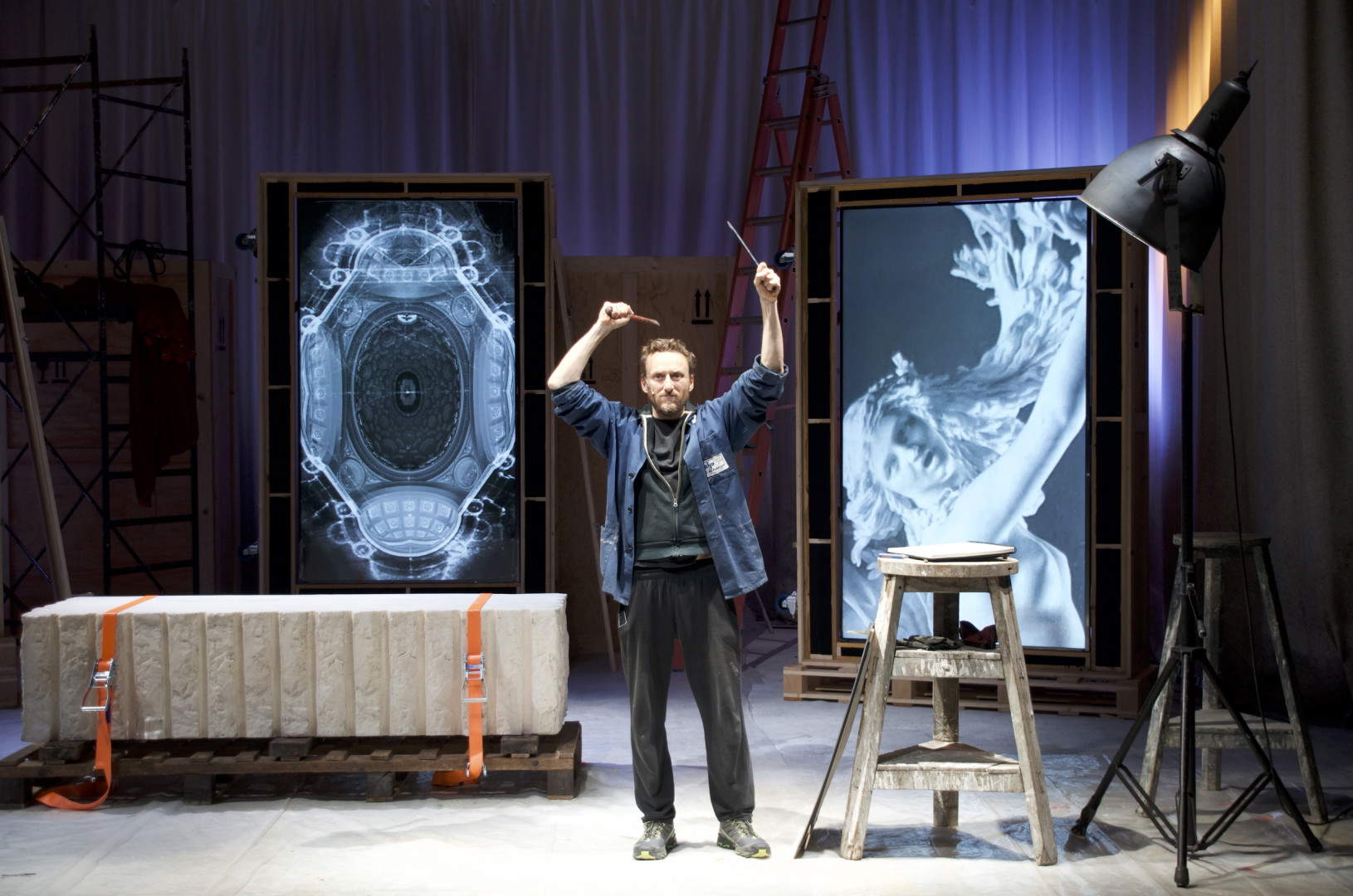From Dec. 3 to 15, 2024, Ravenna’s Teatro Rasi will host the premiere of Letterea Bernini, the new work by Marco Martinelli, director, playwright and co-founder of the Albe together with Ermanna Montanari (who is also co-writer of the show), produced in co-production with Emilia Romagna Teatro ERT/Teatro Nazionale. This monologue, starring Marco Cacciola who takes on the role of Bernini, explores the most controversial and human sides of the great Baroque artist Gian Lorenzo Bernini, drawing a parallel between the 17th century and the present.
The show, which after Ravenna will touch other Italian cities in 2025, is inspired by a documented story: Bernini, now an old man, faces accusations from Francesca Bresciani, a lapis lazuli artisan, who accuses him of not having paid the right price for one of his works. The tension between the two, with Bernini enraged at the woman, becomes the pretext for an investigation of power, artistic rivalries and the complexity of the human soul. The work, set on August 3, 1667, takes us into Bernini’s Roman studio, where the artist, sculptor, painter, and architect rages with Bresciani, while evoking the ghost of his historic rival, Francesco Borromini. This tormented figure, whose human tragedy culminated in his suicide, becomes the pivot of the comparison with Bernini.
“The love for Bernini paradoxically stems from his great rival, Francesco Borromini,” Martinelli explains. “Years ago Ermanna and I entered San Carlino, Borromini’s masterpiece, and we were enchanted, overwhelmed, stunned. From there I started reading about everything; and the more I got into Borromini’s life, the more his rival, Gianlorenzo, came forward. At first I tended to push him away, I was bothered by this overbearing figure, so protected by the popes, the artistic dictator of the Rome of his time. He was not only a great artist, he was an entrepreneur, he decided who worked and who didn’t. Then at a certain point, thanks to Ermanna, I was also enraptured by Bernini’s greatness and the first thought was to create a dialogue between the two. But like in a Western movie, there was no room for both of them on stage, so Bernini eventually took the stage, because in addition to being a painter, sculptor and architect, he was also a man of the theater.”
Initially conceived as a dialogue between the two artists, the text turned into a monologue densely populated with voices and memories, embodied by Cacciola, who alternates between Italian and Neapolitan in an intense and layered performance. Martinelli’s Bernini is not only a multifaceted and ambitious genius, but also a man filled with contradictions: his character emerges in all its complexity, reflecting on the power dynamics that still pervade society today.
Through a dramaturgy that weaves seventeenth-century and contemporary, the play evokes universal themes, such as the relationship between intellectuals and propaganda, competition between artists and the eternal tension between creativity and compromise. Amid quotations from popes and cardinals, the text goes as far as modern references, evoking dictators and current social dynamics, such as the phenomenon of followers.
The plot culminates at the moment when Bernini learns of Borromini’s suicide. His fury gives way to deeper reflection, “pietas” toward his rival and a belated recognition of his genius. Who can fully understand the greatness of an artist? His rival. His adversary. His peer. “Bernini was a figure full of contradictions, capable of violence and bullying on the one hand and capable of moments, on the other hand, of great humanity, otherwise he would not have given us all his masterpieces,” Martinelli points out about this investigation into the complexity of the human soul, all the more significant in an age, ours, dominated by Manichaeism, simplifying (anti-)ideologies and media pillories. The tension between admiration and hostility, between past and present, makes Letters to Bernini a work that is not only a tribute to the Baroque, but also a critical lens on contemporary society, reminding us that conflict, in art as in life, can also be generative.
The play, after its premiere in Ravenna, will tour to several Italian cities. From January 28 to 30 it will be at Teatro Eleonora Duse in Genoa, from February 4 to 9 at Teatro Elfo Puccini in Milan, from March 4 to 9 at Teatro delle Passioni in Modena, from April 2 to 6 at Teatro Biondo in Palermo, and finally from April 10 to 16 at Gallerie d’Italia in Naples.
 |
| Bernini's genius and shadows come to theater: Ravenna debut for play about artist |
Warning: the translation into English of the original Italian article was created using automatic tools. We undertake to review all articles, but we do not guarantee the total absence of inaccuracies in the translation due to the program. You can find the original by clicking on the ITA button. If you find any mistake,please contact us.